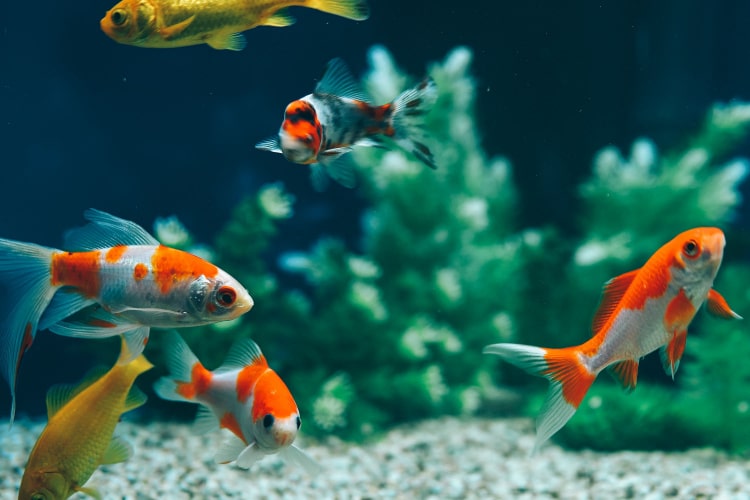Fish are incredible pets. They’re beautiful to look at, yet also very low maintenance. Plus, it’s always fun to build their habitat and decorate the aquarium any way you want to.
However, not every type of fish can survive in every environment.
Brackish water fish can only survive in brackish water, and since this type of aquarium is a little more difficult to maintain than a freshwater aquarium, a lot of people miss out on some very exotic specimens.
But making a brackish water aquarium is relatively easy. Today, we’ll take you through all the steps to make brackish water for aquarium.
What’s Brackish Water?
Brackish water is basically a combination of salty and fresh water. The sodium content of the water isn’t quite as high as seawater, but freshwater fish definitely can’t live in it.
Some of the most famous types of fish that can only survive in this type of water are:
- Archerfish
- Wrestling halfbeak
- Butterfly leaf goby
- Dalmatian molly
- Balloon molly
Luckily, there’s an easy way to determine if the water is brackish or not. All you need to do is get a home water testing kit.
For the water to be hospitable for brackish water fish, it should have a pH level between 7.8 and 8.4 and a sodium level between 180 and 360 ppm (parts per million).
How to Make Brackish Water for Your Aquarium Tank
The first step is to clean and rinse out your aquarium, and it’s important that you don’t use any soap or cleaning products. Instead, we recommend that you make a 2:1 solution of white vinegar and water and put it in a spray bottle. This type of DIY solution can help you get rid of most stains, and unlike most store-bought cleaning products, it’s not harmful to fish.
While the aquarium is drying, add dechlorinated water into a bucket. If you don’t have dechlorinated water, you can use fresh water with a water dechlorinator to get the desired result.
However, don’t use water straight from the tap since it might contain pollutants and contaminants that could harm or kill the fish.
Let the water sit for a few minutes. Once it’s dechlorinated, start adding salt.
The best option is coral salt since it contains minerals that are commonly found in brackish water. Using this type of salt will ensure that your aquarium tank mimics the natural environment of brackish water fish as closely as possible.
Add 2 tablespoons of coral salt for every gallon of water. If the aquarium is a large one that holds around 10 gallons or so, then a better option is to add the dechlorinated water directly into the aquarium and then start adding the salt.
Regardless of when you add the salt, you need to stir the water for a bit so it dissolves faster. After around 20 – 30 minutes, all of the salt should be properly dissolved, and you can test it to see if its pH level is in the right range, between 7.8 and 8.4. You can test the water by using a salinity tester and a pH meter.
If the pH of your water is within range, the next step is to add the gravel, add a filter, and place your fish in their new home.
Maintaining a Brackish Water Aquarium
The water in your brackish water aquarium tank should fall within the following parameters:
- pH: 7.8-8.4
- ppm: 180-360
- Alkalinity: 10-18 KH
- Temperature: 72-80 ℉ (22-27 ℃)
The first three values should be checked every one to two weeks using a testing kit. Most pet shops have aquarium testing kits.

As for the temperature, your aquarium will need a water filter, and we recommend getting one with a built-in temperature gauge. If you can’t find one, then get a separate filter and temperature gauge so that you can keep an eye on the environment inside your aquarium at all times.
Apart from the fact you need to monitor these values and make sure your aquarium water meets them, the maintenance of a brackish water aquarium tank is the same as any freshwater tank:
- Wipe the glass once a week to remove any algae on the inside of the aquarium
- Siphon the gravel or sand that you have inside the tank every two weeks to get rid of any uneaten fish food
- Clean out the water filter every two weeks to make sure that it’s working properly
- Replace around 10% of the water every week or so to make sure that it’s clean
Every time you replace the water, you’ll need to repeat the exact same process that we went over a bit earlier. Add dechlorinated water to a bucket, and add two tablespoons of coral salt for every gallon of water in the bucket. Mix it, let it sit for 20 minutes, and add it to the aquarium slowly.
Make sure that you check the sodium levels and the pH balance of the water after replacing it to make sure that all values are within the proper parameters.
Conclusion
Brackish water tanks require moderate maintenance, but they’re honestly not too different from standard freshwater tanks.
Change the water every now and then, clean your filter, wipe off the glass, and make sure the values of the four parameters are where they should be.
The only extra thing to remember is to regularly check the sodium levels in your tank and add coral salt when needed. Other than that, simply enjoy watching your new brackish water friends swimming around in the home you made for them.